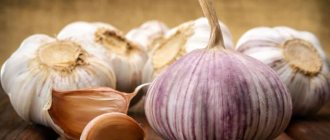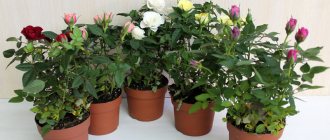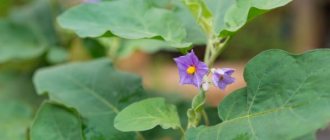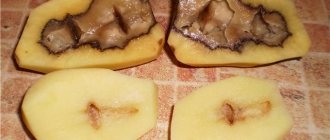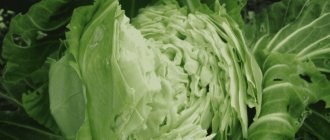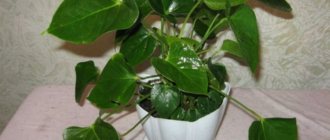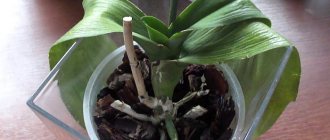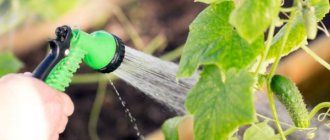Is it possible to plant sprouted onions before winter?
It all depends on how sprouted the onion is. Possible options:
- If the bulb has sprouted a little, it can be planted before winter with all the others. Just before doing this, you need to check the weather forecast to see if frost is expected the next day. Otherwise, the sprouts may die.
- If the sprouts are medium in size, they should be cut off and then planted with onions. But such an onion will not produce a turnip.
- If the bulb has sprouted too much, all that remains is to throw it away, because there will be no harvest from it.
It is recommended to plant seedlings with cut sprouts in a separate part of the garden bed. This way, after sprouting, it will be easier to understand where the onions are located on the greens (for quick consumption).
Reference. In order not to throw away the sprouted seedlings, you can plant them in a jar at home. Then there will always be fresh greens on the table.
Onion's relationship to temperature
Onions are fairly cold-resistant plants. The minimum temperature for seed germination is 5-10 ° C, the optimal is 18-25 ° C. At a temperature of 5-8 ° C the germination period lasts 25-35 days, at 18-20 ° C - 10-12 days, and at 25-30 ° C From -3-5 days.
Perennial onion species in a 2-3-year-old crop grow in spring at an average daily temperature of 5° C.
The leaves of adult onion plants easily tolerate -2°C, but die off at lower temperatures; The leaves of perennial onions and leeks are not affected by frost even down to -5° C.
Mature plants of spring onions, chives and multi-tiered onions are more frost-resistant than other types of onions. They are also more winter-hardy. These species, as well as slime and fragrant, overwinter at a temperature of -33 ° C by 100%, while leeks, garlic and onions freeze out by 60-100%.
The optimal temperature for the growth and development of onion species grown from seeds is 23-25° C. Our observations have shown that higher temperatures, for example 35-45° C, first accelerate growth and then retard it; with prolonged exposure to high temperatures, the growth of leaf mass occurs less intensively than at a temperature of 23-25 ° C.
For onions that form a real bulb (onions, garlic), an increase in temperature during the period of cessation of growth and the outflow of plastic substances from the leaves into the bulb helps to accelerate this process, and, consequently, the ripening of the bulbs. A decrease in temperature below 20-22° C delays the physiological processes that ensure the formation of the bulb.
This was confirmed by experiments carried out on onions of the Strigunovsky local variety and early ripening vegetatively propagated Dnovsky local. The first was grown from seedlings, the second from a selection in vessels in the field. When leaf growth stopped (August 15-20), some of the vessels were transferred to a greenhouse at temperatures of 25-27 and 18-20 ° C, where the ripening of the bulbs occurred in the Strigunovsky local variety earlier by 8-10 days, in the Dnovsky local variety - by 3-5 days.
The influence of temperature during the ripening period of bulbs on the rate and completeness of this process under natural conditions showed that if within 2 weeks after the cessation of leaf growth, the average daily air temperature was 27.2 ° C (maximum 34.5 ° C), then ripening for all varieties of onions were finished in 8-13 days, but if it was 22.1 ° C (maximum 26.4 ° C), then the onions ripened in 11-18 days.
For perennial onions and leeks in the 1st year of life, high temperatures retard growth and development. The most favorable temperature for these types of onions is moderate (24-27° C). The negative effect of high temperature is especially noticeable on leeks. In the North Caucasus and Central Asia in spring and summer, high temperatures retard the accumulation of green mass, plants grow and develop poorly, and intensive growth begins only with the onset of relatively low temperatures in September-October.
Temperature significantly affects the formation of vegetative and generative buds not only during the growing season, but also during storage. In onions, a low positive temperature during storage (5-10°C) promotes a more complete passage of all phases of development of the generative organ; a higher temperature (12-15°C) somewhat delays this process.
The work of Palilov and Rastrepina showed that low temperature (from -1 to 1°C) during storage of onions inhibits the development and regrowth of shoots, as well as the development of vegetative buds.
Our research in the Leningrad region showed that the formation of generative organs in the bulb occurs when different varieties of onions are stored at relatively low temperatures; the best temperature for this process is 8-12° C. The formation of vegetative buds in the bulb occurs more fully at a relatively high temperature (18-20° C). The degree of growth and development is also affected by the duration of exposure to a particular temperature during storage. Low temperature retards leaf growth, and the longer this exposure, the later and smaller the leaves grow.
As the temperature rises, onions' tendency to vegetative growth increases, which is manifested in an increase in the number of branches and leaves, as well as the power of the latter.
Storing sowing and sampling at low temperatures has a noticeable inhibitory effect on the further growth of the vegetative parts of the plant: the number of leaves and their size, and, consequently, the mass of the bulb decreases.
Onion bulbs stored at low temperatures (especially in the initial period) grow leaves 3-5 days later than bulbs stored at relatively high temperatures. In addition, low temperatures reduce leaf vigor. In vegetatively propagated onions of the eastern subspecies, this influence is more noticeable than in onions of the western or southern subspecies. Vegetatively propagated onions, stored at alternating high and low temperatures, grow 30-32 leaves, at low temperatures - only 27 leaves, at 16-20 ° C - up to 36 leaves.
The action of high temperature (16-20 ° C) after exposure to low temperature can no longer influence the changes that have occurred in the bulb. High temperature affects the increase in the number of vegetative buds. Miller noted back in 1932 that under the influence of high temperatures, onions, which usually produce seeds, became multi-primed and reproduced vegetatively. As a result, the author comes to the conclusion that some onion varieties in warm countries have acquired the ability to reproduce not by seeds, but by bulbs.
Aoba, using onion varieties growing in Japan, confirmed the influence of temperature (both high - 30 ° C and low - about 0 ° C) on the development of bulbs during storage: under these conditions, plant flowering and seed formation were delayed, they were often deformed and sterile.
If you find an error, please select a piece of text and press Ctrl+Enter.
Advantages and disadvantages of planting onions in the fall
To decide whether to plant onions before winter, you need to weigh the pros and cons.
Planting onions in the fall is a good idea because:
- The harvest will appear early. The bulbs will be larger, no matter what variety is planted.
- After harvesting, space will be freed up for planting something new. For small plots of land this is a suitable solution.
- Onions planted in the fall do not need to be weeded often - weeds do not grow well in cold weather.
- The plant suffers much less from onion flies.
- The winter harvest is stored well and for a long time.
Disadvantages of planting onions before winter:
- You need to plant more, because not all the bulbs will survive the winter.
- Unpredictability of weather. If there is little snow and severe frosts in winter, all planted onions will freeze. The beds will have to be insulated.
Lack of ventilation, high humidity and the presence of mulching material, which provides a greenhouse effect in warm weather, can lead to the formation of rot. It can be identified visually: it appears as a whitish powdery coating, the bulb becomes slippery and soft.
Planting spoiled sets is fraught with loss of the entire harvest , since the fungus quickly spreads through moist soil and spreads to healthy bulbs.
Important! To prevent the seedlings from dying, sprinkle 1-3 cm of sawdust on top of the bed. In the spring they will disperse in the soil and create a loosening effect. In this case, the beds can be watered 2 times less often.
Landing technology
The method of planting onions for the winter is not particularly difficult. You need to decide on the location of the beds, prepare the soil and seeds.
Site selection and soil preparation
For cultivation, choose a place that is well ventilated and illuminated by the sun. The site should be open so that as much snow as possible falls on it.
The soil should be loose. You won’t be able to grow a lot of onions on clay soil.
Soil preparation includes:
- weed removal;
- digging up the beds;
- checking soil pH (should be around 6.0-6.2);
- tillage of soil with ash.
Preparing, sorting and processing bulbs before planting
Initially, the bulbs are sorted out in order to remove the diseased ones and not accidentally plant them with healthy ones. Then they are distributed by size. Large sets are not suitable; choose a size up to 15 mm.
Important! 14 days before planting, the seedlings are soaked in warm, almost hot water (about 47°C), kept for 3-4 hours and removed from the water. If left for several days, the seedlings will become unsuitable for planting.
After warming up, they move on to treating potential pests. The drug “Fitosporin M” and its analogues are used. Soaking for an hour in a solution of potassium permanganate helps a lot.
Planting scheme
Onions should not be planted too deep for the winter. Dig beds 6-7 cm deep. First, fill them with sand - this way you can save the crop from waterlogging. Planted to a depth of 3-4 cm.
The bulb is placed vertically, pressed with your hand and covered with earth on top. The distance between the bulbs should be at least 7 cm. Planting them in one bed further than 10 cm from each other is also not worth it - space should be used sparingly. The distance between the beds is left at least 15 cm.
The soil
Proper soil preparation is important for harvesting. If the seeds fall into the soil at a greater depth than required, they may germinate with their roots upward. The composition of the soil is also important. The best option is loamy soils subject to the application of mineral and organic fertilizers.
The place should be well lit and warm. An effective agronomic method is to place onions in beds where cabbage, tomatoes, and cucumbers were previously grown. The above-mentioned crops enrich the soil with nitrogen and contribute to abundant onion harvests.
The soil for the beds is prepared in the fall: they dig it up, add compost and mineral supplements. The prepared substrate is watered with a solution of copper sulfate.
When planting in the spring, it is better to prepare the soil in the fall - add all the necessary fertilizers, disinfect
In the spring, it is additionally recommended to add ash. Too much fertilizer will cause abundant green growth, and this may affect the size of the roots. Experienced gardeners experiment with several options until they find one that suits the soil perfectly. A few days before planting the seeds, the ground is covered with transparent polyethylene or dark film.
Important! The reception has a double effect: it warms the soil and prevents the growth of weeds.
A method for treating a finished bed with the preparation “Baikal EM-1” is described. The product contains strains of beneficial microorganisms. When used, the culture receives protection from fungi and pathogenic bacteria. The process of humus formation is stimulated.
To treat finished beds, you can use the preparation “Baikal EM-1”
Important! The bed should be about a meter wide and no more than 10 cm high, otherwise the soil will dry out quickly.
What to do if winter onions sprout in the fall
After planting in autumn, onions should not germinate until spring. If this happens, you need to understand the reasons and take measures to save the harvest.
Why did it happen
The main mistakes gardeners make that lead to the germination of winter onions:
- Boarding too early. Despite the fact that many sources recommend starting planting at the end of August - September, the peculiarities of the local climate must be taken into account. If planted in warm weather in September, you may experience premature germination.
- The size of the planted bulbs is too large. A set of 2-3 cm in size will germinate faster than a small one, so it cannot be planted for the winter.
- The wrong place for planting is damp or too warm, where there is not enough ventilation.
There are also reasons independent of the human factor - for example, a late start of winter, an abnormally warm autumn.
Will there be any point?
If onions sown before winter begin to germinate ahead of time, they can only be of use in one case - if the winter is mild and warm.
If it does survive, the harvest will be half that planned, because it will be much more difficult for such onions to germinate further.
At what temperature do onions germinate before winter?
Before winter, onions begin to germinate at above-zero temperatures. If the thermometer has risen above 12-15°C, you should be wary of early shoots.
What to do in such a situation
In the current situation, the most important thing is to prevent the sprouted onions from freezing . This will require simple insulation methods. For example, dig up loose soil from the greenhouse that has not yet frozen and fill the bed with a layer of 2-3 cm.
In such a situation, mulching material is suitable: grass or weed clippings, compost, fallen leaves, hay, nettles, bark or wood chips. Mulch is poured on top of the ground. Then the bulbs will be protected from freezing.
If onions are planted in late August or early September, and there is still time for warm weather, it is worth digging up what has sprouted and sowing the beds with new sets. However, if the ground has frozen and become hard, nothing can be planted in such soil until spring, because the bulbs will not take root.
Different varieties: what to choose?
Before listing the most suitable varieties for seed propagation, let us outline the main selection criteria.
| Criterion | Description |
| Growing season | Varieties are divided into early, mid-season and late growing season. When growing from seeds, it is better to choose early ones. |
| Number of primordia | In low-germinating varieties, one bulb ripens, sometimes two. Nutrients are concentrated in the fruits. In polybuds, more of the bulbs themselves mature, but the growth mainly goes to the greens. Therefore, preference is given to the low-germinating variety. |
| Bulb size | The indicator is related to the purpose of the variety, taste characteristics, and shelf life. |
Onion varieties are divided depending on the size of the bulbs, the number of rudiments, and the growing season.
The combination of qualities may look very attractive, but inexperienced gardeners should consult with specialists. It often happens that after going through several varieties, they find the ideal one for certain conditions.
Important! To avoid making your own mistakes, you can use the experience of others.
Let's consider the varieties that are best chosen for seed propagation.
Early ripening varieties have good keeping quality. According to nesting they are distinguished:
- with ripening of 2-3 bulbs - Timiryazevsky;
- 3-5 bulbs - Bessonovsky;
- up to 4 pieces - Rostov;
- small-growing, 1-2 bulbs - Odinovets.
Mid-season varieties: Danilovsky 301, Arzamassky, Svirsky, Carmen, Centaur.
Mid-season varieties include Arzamassky, Svirsky, Carmen
Let's look at the most popular domestic varieties.
- Centaur. Refers to low-primordial ones. The bulbs ripen well by the end of the season, weigh up to 150 g when sown in the ground, when using seedlings - up to 300 g. The root crops are dense and have a high shelf life. Gardeners value the variety for its pungent taste, undemanding cultivation, and disease resistance.
- Agro winter. The name of the variety indicates the method of sowing. The seedlings germinate early. Root vegetables have an average weight of 90-100 g. The taste is semi-sharp. During the harvest season it is stored until the end of the year.
- Farmer. Suitable for direct planting in the ground and for growing seedlings. Large round root vegetables with juicy white pulp weighing up to 300 g. Due to its unpretentiousness, resistance to adverse climatic conditions and diseases, it is considered universal.
The Farmer variety is considered unpretentious and resistant to different weather conditions.
- Zolotnik. An early-ripening, small-growing variety, suitable for producing onion sets and turnips.
Features of care
Caring for winter onions is as follows:
- In early spring, the soil is low in nutrients, especially nitrogen. For feeding, it is better to use complex compounds containing nitrogen. Treat at the rate of 30 g per 1 m2 of bed area. Fertilizers are dissolved in warm water.
- In the spring-summer period, feed at least 1-2 times a month. To do this, take 2-3 kg of herbs and infuse them in 10 liters of water for 2-3 days. Strain the infusion, add water and pour over the onions.
Winter onions do not require specific care. It is resistant to pests. Intensive watering, required at the beginning of growth, is replaced by melt water.
Important! In spring, it is necessary to regularly weed the beds and loosen the soil.
How to protect a garden bed from frost
To prevent the garden bed from freezing in winter, use mulching material. Peat, hay, spruce branches, and fallen leaves are well suited for winter onions. The bed is filled with any of the materials 10-14 days after planting. The colder the region, the thicker the mulch layer.
The mulching material is reinforced with branches on top. You cannot cover the beds with film - this will create too high a temperature and excessive humidity. With the beginning of spring, the insulating material is removed.
Questions
I want spring onions to grow early in the garden bed. When to plant and how?
In order to get green arrows in early spring, plan planting in the fall (August-September).
You can buy seeds or use those you get yourself. They should first be soaked in water or any growth stimulant for 10-12 hours. Plant the seeds to a depth of 2 cm in moist soil, and apply a layer of mulch on top.
You can grow different varieties of onions on your plot, but you should listen to the opinions of local experienced gardeners and choose the most successful ones so as not to waste time on your own experiments
I planted onion sets from the purchased material, and he gave it to the shooter. Is there something wrong with the seeds?
Here the reason is rather different. Planting is usually done in early June. Climate change has caused seasonal temperature variations to change. therefore, an arrow could form. It must be carefully trimmed, and for better growth of the bulb, you can add fertilizer. Make sure that irrigation water does not accumulate in the soil and weed weeds in a timely manner. The bulb grows systematically when the plant has enough nutrients, moisture, and oxygen.
Tips and tricks
You can get a large and high-quality harvest by following these recommendations:
- Treat the soil to remove weeds and saturate it with nitrogen-containing fertilizers.
- 2-3 weeks before planting, add ash to the ground - 0.5 kg per 1 m2.
- Go through the seedlings, checking for damage and signs of rot.
- On the day of planting, first soak the seed for 30 minutes in salt water, then rinse and immerse in a saturated solution of dark pink potassium permanganate for 10-15 minutes.
- After winter, make sure the soil is always moist.
- When 70% of the onions have sprouted, start loosening the soil at least once a week.
How to care for wintergreen onions
Winter onions do not require special care in spring. However, it is during this period that developing bulbs need nitrogen. Therefore, for feeding, it is better to use ready-made complex mineral fertilizers, for example, nitrophoska and ammophoska. Fertilizers should be applied to the soil at the rate of 25-35 g per m² of area. It is better to dissolve fertilizers in warm water (10 g per 10 liters of water).
Onions need feeding
For the first spring feeding, it is best to use an infusion of cow manure. For one bucket of water, 1 cup of mullein will be enough.
The purpose of the second feeding is to enrich the soil with microelements. To do this, it is better to prepare a herbal infusion in advance. To do this, 5 kg of fresh herbs need to be finely chopped, pour 10 liters of water and leave for 2-3 days. Then strain the herbal liquid, dilute it in a ratio of 1:10 with water and pour over the onions.
